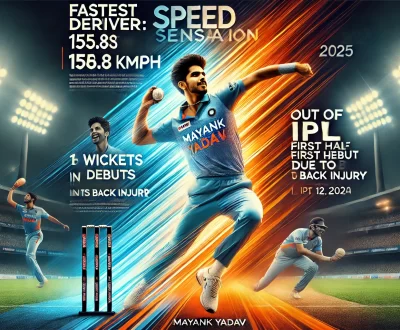JOURNEY OF BCCI AND INDIAN CRICKET TEAM
- INTRODUCTION
The journey of bcci is very interesting: the evolution, the struggle and how racism the Asian Mem team faces. How bcci become the richest board of cricket how bcci managing cricket world and many more things in this article

-
WHEN BCCI FORMED AND HOW IT FORMED
The BCCI was established on December 4, 1928, to oversee cricket in India. Before its creation, cricket was managed by different regional clubs and associations. The BCCI was formed to unify these groups, organize domestic cricket competitions, and handle India’s representation in international cricket. This move aimed to bring more structure and coordination to cricket administration in the country.
-
Foundation Member Of BCCI in 1928
- Bombay (now Mumbai) Cricket Association
- Madras (now Chennai) Cricket Club
- United Cricket Club of Calcutta (now Kolkata)
- The Cricket Club of India, Bombay
- The Jorhat Club, Assam
These representatives came together to form the BCCI with the aim of creating a central body to manage and promote cricket in India. The membership and structure of the BCCI have evolved significantly since then, with many more regional and state associations joining over the years.
-
IMPACT OF 1983 WORLD CUP
- More Fans: Cricket became hugely popular in India, with more people watching and playing the sport.
- Youth Inspiration: Many young people wanted to play cricket, helping to grow the sport.
- Global Recognition: India’s win made the BCCI more respected in international cricket.
- Greater Influence: The BCCI’s role in world cricket became more important.
- More Money: Cricket matches attracted more sponsors and advertisers, boosting the BCCI’s revenue.
- Better Facilities: With more money, the BCCI improved training facilities and player development.
- Expanded Role: The BCCI took on a bigger role in organizing cricket in India and internationally.
- Leadership: The BCCI’s influence in cricket administration grew
RACISM DURING 1983 WORLD CUP
- Crowd Behavior: Some spectators in England made racist comments and acted disrespectfully towards the Indian players.
- Media: There were also negative and biased remarks from some commentators and media.
Team’s Response
- Resilience: Despite these challenges, the Indian team, led by Kapil Dev, stayed focused and went on to win the World Cup
-
HOW BCCI HELP IN FORM ASIAN CRICKET COUNCIL (ACC)
- Need for an Asian Cricket Body:
- Asian countries wanted a group to help manage and grow cricket in the region.
- BCCI’s Support:
- The BCCI supported the idea and worked to bring together different Asian cricket boards.
- Formation:
- In 1983, with BCCI’s help, the ACC was created to promote cricket, organize tournaments like the Asia Cup, and support emerging teams.
Impact
- Leadership: The BCCI played a key role in setting up the ACC and making sure it was organized well.
- Growth: The ACC, with BCCI’s support, helped cricket grow and improve in Asia
Long-Term Effects of 2003 Champion trophy
- Preparation for 2007: The experience gained from the 2003 tournament contributed to India’s preparation for the 2007 T20 World Cup, which India went on to win.
- Strengthened Infrastructure: The BCCI continued to invest in infrastructure and player development based on the learnings from the 2003 tournament.
STORY OF BEING BCCI THE RICHEST BOARD
- 1983 World Cup: India’s win in the 1983 World Cup made cricket very popular in the country, increasing fan interest.
- 1990s: As more people started watching cricket on TV, the BCCI began making money from sponsorships and broadcasting deals.
- IPL (2008): The BCCI launched the Indian Premier League (IPL), a T20 cricket league with franchise teams. The IPL attracted huge investments from companies and sponsors.
- High Revenue: The BCCI made a lot of money from the IPL, sponsorships, and TV rights. This increased its financial power.
- Improved Facilities: The BCCI used its money to build better stadiums and support player development.
INTRODUCTION OF IPL
-
The IPL was introduced in 2008.
- The BCCI (Board of Control for Cricket in India) established the IPL
Key Features
-
Franchises: Teams are owned by different companies and celebrities, and they bid for players from around the world.
-
Matches: The league features fast-paced, high-scoring matches played in stadiums across India.
-
Popularity: It quickly became one of the most-watched and commercially successful cricket leagues globally.
Impact
- Financial Success: The IPL has brought huge revenue through sponsorships, broadcasting rights, and advertising.
- Player Exposure: It has provided a platform for both international stars and emerging Indian players to showcase their talent.
- Entertainment: The IPL is known for its entertainment value, combining cricket with music, dance, and celebrity appearances.
CONCLUSION
In summary, the BCCI has come a long way from its early days to become a major force in cricket, thanks in large part to advances in technology. As ICT has developed, it has transformed how cricket is played, watched, and managed.
From early tech innovations to the latest digital tools, these changes have helped the BCCI grow and connect with fans around the world. The future looks bright as both the BCCI and technology continue to evolve together, promising even more exciting developments in the world of cricket.










